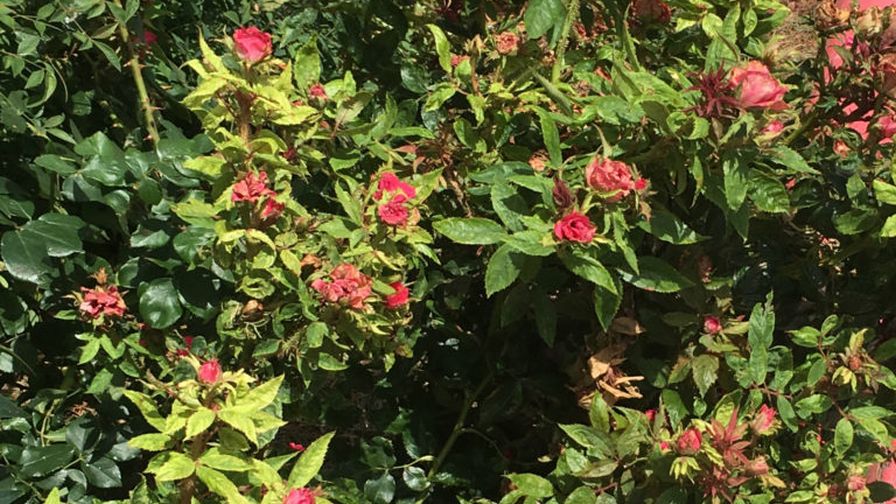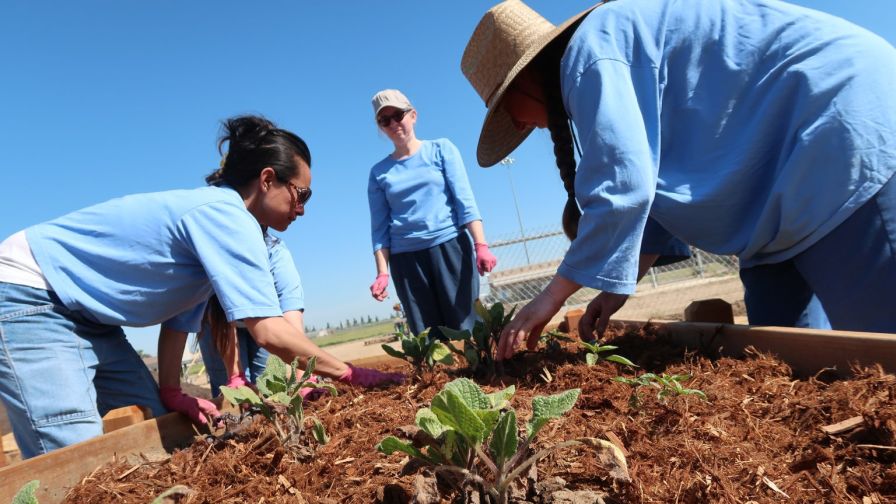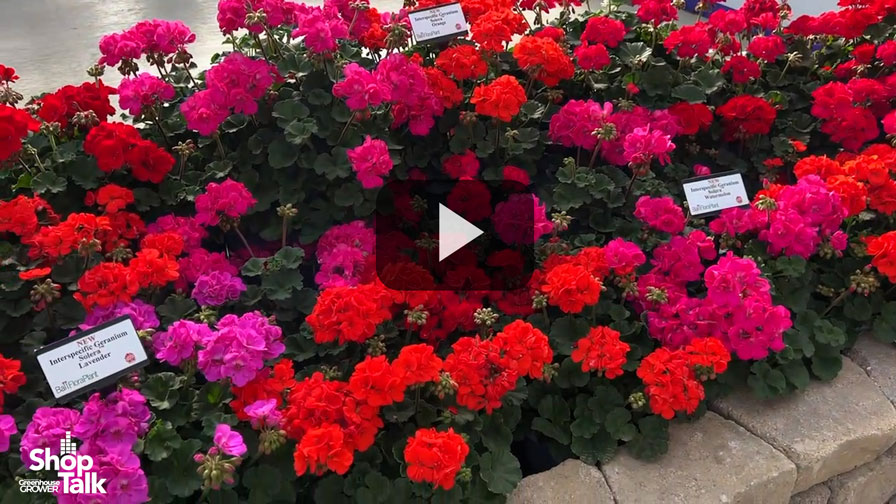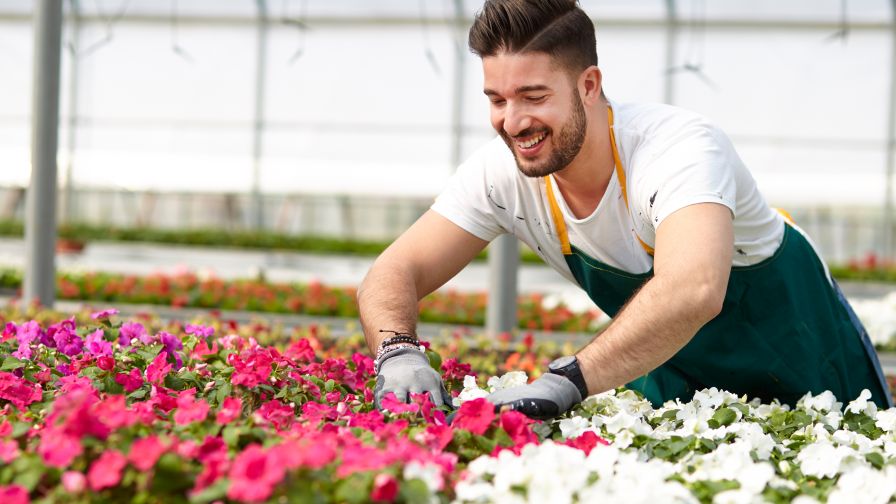Research Finds a Way to Distinguish Rose Rosette Disease and Herbicide Symptoms

Texas A&M AgriLife photo
In 2019, a small team of researchers from Texas A&M, led by Dr. Dmitry Kurouski, developed a new diagnostic tool for rose rosette disease detection. Using a hand-held, portable spectrometer, Kurouski’s team correctly identified the virus in leaves both non-invasively and non-destructively, with an almost instant read.
Raman spectroscopy works by relying on light to interact with molecular vibrations in a leaf. A fingerprint is made based on these vibrations, meaning that the virus that causes RRD is identified by its unique fingerprint. Previously, the team proved this technology could identify fungal diseases on corn, wheat, and sorghum and eventually adapted it to successfully compare healthy and asymptomatic rose leaves, as well as symptomatic and asymptomatic leaves. They could even differentiate rose leaves with different degrees of infection. You can learn more about the initial research here.
Greenhouse Grower Senior Editor Brian Sparks recently caught up with Kurouski to see what his team has been working on since then. The answer is a new tool that can help growers distinguish between rose rosette symptoms and herbicide damage. Keep reading to learn more.
Brian Sparks: Your latest research has focused on differentiating between herbicide stress and rose rosette disease. Can you talk about how that has progressed over the past year or two?
Dmitry Kurouski: Working with plant pathologists as well as rose growers across the country, we found that symptoms of rose rosette are visually very similar to the symptoms caused by herbicides, specifically yellowness of leaves, chlorosis, etc. This is important because people spray herbicides in their gardens, and they often accidentally apply them on roses. When their roses start exhibiting these symptoms, they think they’ve found rose rosette gardens.
At the same time, plant pathology labs tell us that a large number, if not the majority of samples they receive, for rose rosette testing are actually for herbicide exposure. But herbicide stress is abiotic stress, and therefore it comes up negative on PCR tests, which gives these labs headaches because it looks like their diagnostic approaches don’t work. PCR labs cannot identify abiotic stresses, and they don’t have the tools that would be able to diagnose and differentiate herbicide stresses from rose rosette.
We started working on this problem two years ago in collaboration with Kevin Ong in the Department of Plant Pathology at Texas A&M. We investigated with what accuracy raman spectroscopy can be used to predict herbicide stresses and differentiate between herbicide stresses and rose rosette. We modeled two herbicide stresses induced by two herbicides: Weed B-gon and Roundup. These two herbicides have completely different modes of action.
What we found is quite remarkable: as early as day two after the application of both herbicides, we can accurately identify herbicide stresses. We can also differentiate between the two herbicides as early as day two. The accuracy of prediction is remarkable, in the range of 90%.
Raman can also differentiate between these abiotic stresses and rose rosette, which suggests that raman can be considered as a very accurate, yet noninvasive and nondestructive, approach that can be used to differentiate between biotic and abiotic stresses on roses and identify herbicide stresses.
Brian Sparks: So if I’m a grower, what can I do with this information?
Dmitry Kurouski: Right now we thinking about commercialization of this approach and the development of an inexpensive sensor. But that is still a long way off, so for now growers will have to rely on the tests they’re currently using.
Brian Sparks: When it comes to rose rosette, do you have a sense of how how much it’s spreading in different areas of the country?
Dmitry Kurouski: I’m not an expert on rose rosette, but we recently had a conference here at Texas A&M a few months ago that was attended by nearly all the major rose growers in the southern U.S. According to them, it’s still an emerging problem. When I told them we had this tool, they were very excited.
Our research paper has been submitted for review, and we expect acceptance any time.











